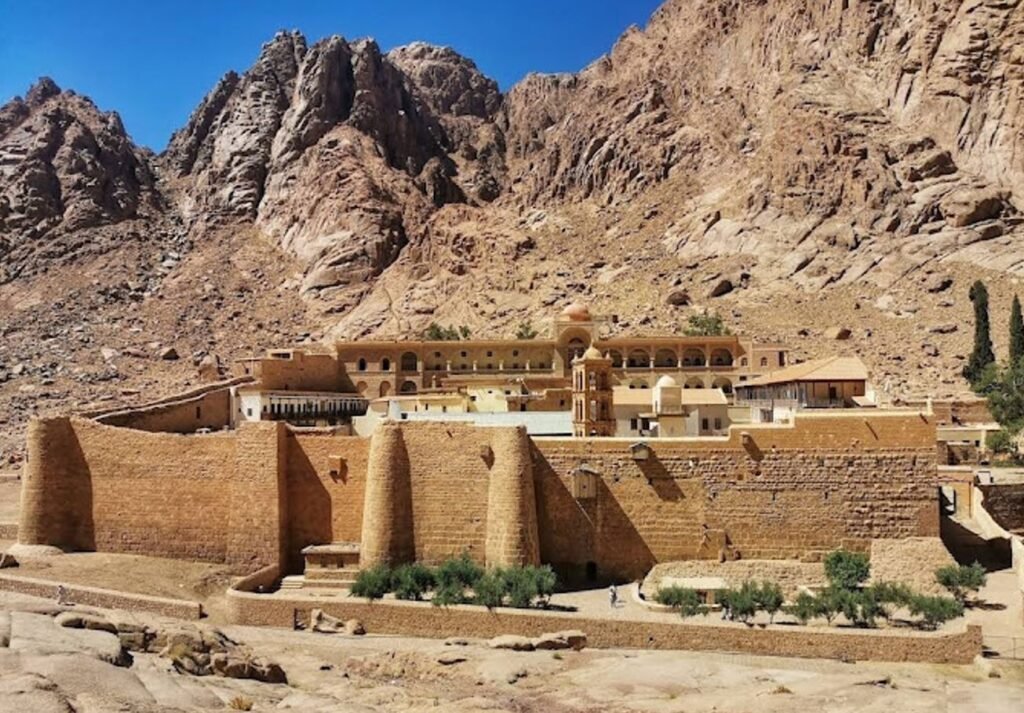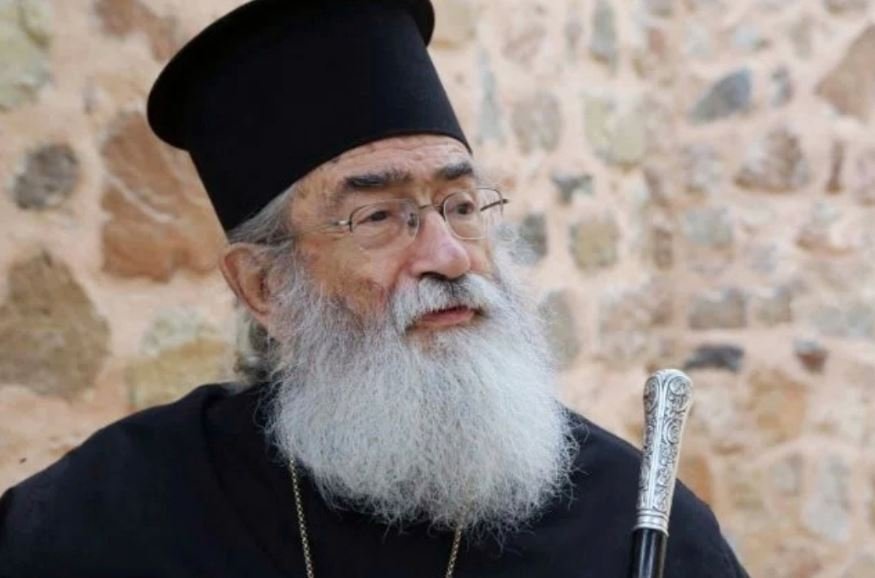Government Intervention: A Preventive Measure
The recent transfer of Archbishop Damianos from the Sinai Monastery to Athens is a significant event that underscores the complexities inherent in the dynamics between religious figures and state governments. The Greek government’s involvement came as a response to escalating tensions and potential threats directed not only toward the Archbishop but also towards the broader Greek community residing within the monastery. Reports suggest that Egyptian authorities were contemplating the arrest of Archbishop Damianos, highlighting a precarious situation that necessitated immediate action.
This intervention was not an isolated incident; it is essential to understand it in the context of previous occurrences that saw other Greek officials facing similar risks in the region. The recent history of strained relations between certain factions in Egypt and foreign diplomats raises the stakes significantly. The Greek delegation, composed of key government officials and experts in diplomatic relations, aimed to ensure the safety of Archbishop Damianos while also safeguarding the welfare of Greek citizens residing in the Sinai Peninsula.
The delegation’s approach was multifaceted, emphasizing not only the protection of individual rights but also fostering a sense of security within the community. Engaging in dialogue with various stakeholders in Egypt, the delegation worked diligently to convey the serious implications of potential actions against the Archbishop. By advocating for a reassessment of the situation, they hoped to prevent any further escalation that could potentially jeopardize diplomatic relations between Greece and Egypt.
Encapsulating the seriousness of the situation, the intention behind the Greek government’s intervention was clear: to prioritize human safety and maintain the integrity of the community in the Sinai Monastery. The careful orchestration of this transfer serves as a reminder of the delicate balance between religious authority and governmental oversight, especially in regions marked by political turbulence.
The Current Status of the Holy Monastery of St. Catherine
The Holy Monastery of St. Catherine, a significant historical and religious site located at the foot of Mount Sinai, remains operational following the recent transfer of Archbishop Damianos. According to a statement issued by the Greek Ministry of Foreign Affairs, the monastery continues its normal operations, ensuring that it remains open to visitors. This affirmation is crucial as it underscores the resilience of the monastic community and its commitment to maintaining its spiritual and cultural heritage.
In light of the recent changes in leadership, the monastery has implemented several measures to safeguard its operations and the well-being of its remaining monks. The environment within the monastery remains stable, as the core activities, including prayer services and daily routines, persist without interruption. The community of monks is dedicated to upholding the traditions that have characterized St. Catherine’s for centuries, thereby ensuring the continuity of monastic life.
Moreover, heightened security protocols have been introduced to protect the invaluable relics housed within the monastery. These relics, which hold deep significance to both the Orthodox community and visitors alike, are being closely monitored. The monastery is working in coordination with local authorities to bolster safety measures, particularly in light of recent events that may have raised concerns among the faithful and tourists.
Visitors to the monastery can expect to engage with its rich history and spiritual heritage while feeling assured of their safety. The monks are eager to share the unique religious significance of the site, which has attracted pilgrims and tourists for centuries. Overall, the Holy Monastery of St. Catherine is navigating the complexities of this transition smoothly, focusing on preserving its legacy amid ongoing changes.
The Response of the Patriarchate of Jerusalem
The announcement of Archbishop Damianos’s intended departure from the Sinai Monastery has prompted various reactions from the Patriarchate of Jerusalem. The patriarchate expressed skepticism regarding the authenticity of Damianos’s statement, suggesting that the motivations behind his decision may not be entirely transparent. In light of this, the leadership chose to largely ignore the claims made by Damianos, indicating a desire to uphold the traditional hierarchies and protocols within the Church. This response underscores a potential rift between the Archbishop and the patriarchate, which raises questions about the management of the monastery and the implications of leadership transitions.
Accusations against Archbishop Damianos concerning the monastery’s management have surfaced, with critics alleging that his oversight has not fully adhered to the established rules and traditions of the Church. These accusations include concerns regarding financial transparency, the handling of communal resources, and the overall spiritual welfare of the monastic community. The patriarchate’s response to these allegations suggests a systematic approach to governance that emphasizes adherence to canonical law and the historical precedents that guide ecclesiastical decisions.
Furthermore, the situation has led the Patriarchate of Jerusalem to call for the election of a new abbot, reflecting their commitment to maintaining stability and continuity within the monastic community. This decision illustrates the patriarchate’s dedication to preserving the sacrosanct nature of monastic leadership amidst the turmoil caused by Damianos’s announcement. The patriarchal leadership’s reluctance to engage with the Archbishop’s proclamation further emphasizes their intention to adhere strictly to ecclesiastical traditions and guidelines, which may ultimately influence the future dynamics of leadership within the Sinai Monastery.
Future Implications and the Path Forward
The recent transfer of Archbishop Damianos marks a pivotal moment for the Sinai Monastery and the wider religious community. As the circumstances surrounding this decision unfold, several future implications warrant careful consideration. Foremost among these is the upcoming holy synod meeting, where discussions regarding the archbishop’s compliance with the transfer are expected to occur. The willingness of Archbishop Damianos to adapt to this significant change will undoubtedly influence not only the monastery’s internal dynamics but also the broader relationships within the church hierarchy.
Moreover, the process for electing a new abbot will be crucial in determining the future governance of the Sinai Monastery. This selection process often reflects the underlying values and objectives of the Sinai brotherhood, and as the community grapples with this transition, it will be imperative to ensure that a leader is chosen who can foster unity and address the ongoing challenges. The patriarchate is expected to play a vital role in guiding this process, with the aim of facilitating a smooth transition while restoring order within the monastery.
The ability of the Sinai Monastery and its leadership to navigate this crisis will also serve as a testament to their commitment to the values of their faith and community. As tensions persist, the focus must shift towards promoting reconciliation and collaboration among diverse factions within the monastery. The significance of maintaining unity during such turbulent times cannot be overstated; it will ultimately be the foundation upon which the community seeks to rebuild and flourish. The path forward, while complex, offers an opportunity for renewal and strengthened relationships among the Sinai brotherhood and the broader religious community.


